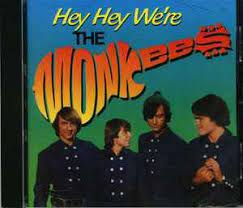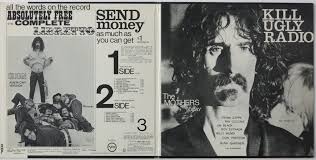When The Fight Between The Monkees And The Suits Came To A HEAD
Norman Warwick remembers
When The Fight Between The Monkees And The Suits Came To A HEAD

In November 1968, several movies starring influential rock bands of the era hit theatrss. After showing off their screwball skills in A Hard Day’s Night and Help!, The Beatles got animated (other actors assumed their voices) in the trippy cartoon musical Yellow Submarine. Also, The Rolling Stones were the stars of the avant-garde whatzit Sympathy for the Devil, directed by French New Wave icon Jean-Luc Godard. But perhaps the most ambitious cinematic romp a ‘60s band took that month is also the most forgotten, and most misunderstood: Head.

Head (right) marked the feature-film debut of The Monkees, the poppy foursome that headlined their own NBC sitcom for a couple seasons. The band was really the creation of two guys, Bob Rafelson and Bert Schneider, who initially wanted to craft a show around the established band The Lovin’ Spoonful. When that fell through, they formed a band with English stage star Davy Jones and three musically-inclined guys—drummer Micky Dolenz, guitarist Michael Nesmith, and bassist Peter Tork—they discovered via a talent search.
From 1966 to 1968, this quartet (also known as the Prefab Four) were stars on the small screen and the pop charts. Episodes had them engaging in slapstick hijinks when they weren’t doing musical numbers that were basically the first music videos. Although they were killing the teenyboppers with such singles as “I’m a Believer” and “Last Train to Clarksville,” the hip and edgy crowd still saw them as a manufactured, mediocre Beatles knockoff.
After the sitcom’s cancellation, they went to work on Head (originally titled Changes), which is just 86 minutes of these guys admitting who they are—and how they would very much like to get away from that image.

The first 20 minutes packs a lot: It begins with Dolenz committing suicide by jumping off a bridge (he gets saved by two mermaids). Then, we get the group singing a ditty about their artificiality: “Hey hey, we are The Monkees / You know we love to please / A manufactured image with no philosophies.” They eventually perform live in front of screaming gals, whose slo-mo screams of enthusiasm are intercut with black-and-white shots of Vietnam War atrocities, including the infamous execution of a Viet Cong officer. The performance ends with the girls rushing the stage to get a piece of the boys, who are now gone and replaced with mannequins.
For a G-rated movie, Head is jam-packed with absurd, alienating antics. The film is mostly vignettes where the Monkees wander around a studio backlot, plow through movie genres (a war movie, a Western, a horror film, a boxing picture) and try to find ways to escape each one of them, usually running from a nefarious, presumably powerful figure (Golden Age leading man Victor Mature).

You get random cameos from Frank Zappa (right) , Annette Funicello, boxer Sonny Liston, football player Ray Nitschke, trailblazing stripper Carol Doda, a then-unknown Teri Garr, and very brief Dennis Hopper. Notorious character actor Timothy Carey pops up now and then to keep things even more insane. And just in case you don’t get the message that these cats are prisoners trapped in their own celebrity purgatory, there are sequences where they are literally trapped in a dark box. When they’re not dryly rolling with the madness, they’re still doing musical numbers, with some of them penned by Harry Nilsson, Gerry Goffin and Carole King.

Head is cathartic chaos for the band and Rafelson, who directed the movie and co-wrote it with a young Jack Nicholson (left) (who also appears for a second). The story goes that all six of them came up with the film when they got stoned one night and dropped all their thoughts onto a tape recorder. Even though Head was undoubtedly conceived under the influence, you can tell this is the work of people fed up with being cornball clowns for the establishment. As the counterculture of the late ‘60s had hippie youth rebelling all over the place, the Monkees did so in their very own movie. They go after cops, corporations, television, advertising, warmongers, post-industrial America, their haters, their groupies—even Christmas. Considering that there’s a scene where Dolenz hops in a tank and blows away a Coca-Cola machine, they want it known that their days of being corporate shills are over.
Rafelson admitted that he wanted Head to be an unsettling experience for audiences. “I don’t want people to like the film. I want them to feel it,” he told the San Francisco Examiner in 1968. “Let ‘em squirm.”
While he gave a vague response when asked at the time about the movie’s title (“Why not?”), Rafelson later admitted that the title was a blowjob joke he hoped would pay off with his next film: “From the producers who gave you Head.” The dirty-mindedness didn’t end with the title. In a nod to Andy Warhol’s provocative short film Blow Job, a close-up shot of Warhol associate John Brockman was used in the ad campaign. It’s no wonder Columbia buried the hell outta this, giving it virtually no publicity and a theatrical rollout that went on for years. (According to Roger Ebert’s mixed review, it didn’t hit Chicago until 1971.) Budgeted at a quarter of a million, it only grossed $16,111.
After Head’s dismal release, the Monkees did a disastrous TV special where they once again set fire to their bubblegum image. (An unsupportive NBC aired it opposite the 41st Academy Awards.) As for creators Rafelson and Schneider, they formed BBS Productions with Steve Blauner and made such new-Hollywood faves as Easy Rider, The Last Picture Show and Five Easy Pieces. (The Criterion Collection released those films and other BBS projects in a boxed set called America Lost and Found: The BBS Story.)
Of course, newer generations who’ve seen Head have embraced what these guys were doing. “With its Duck Amuck–like momentum, Head evokes the futility of being stuck on a hamster wheel with no escape,” wrote Caden Mark Gardner, who also called it “the angriest Hollywood backlot satire of its era.” Veteran film critic Mike D’Angelo praised “this astonishing exercise in self-abnegation as one of the most gleefully pointed assaults on The Man ever filmed.” He also credited the Monkees for practically inventing the liberating absurdism that Monty Python’s Flying Circus wouldn’t start trafficking in until a year later.
The title may refer to fellatio, but it’s actually very suitable for this maddening, musical, Mobius strip of a movie. A surreal collection of coded images, scenes and songs that could either be seen as a psychedelic trip or a stress-induced nightmare, Head properly sums up how this band was feeling, mentally and emotionally, as a collective. Quite simply, these Monkees were tired of monkeying around.
ed´s note: The excellent article above is abpout a specific time in the Monkees´ career as it disappeared that they had a long stricks of tope ten hits both in the UkK and the USA and that their first three or four albums contained excellent songs of the kind that would, within twenty years, be aka Americana.
Their tv series was something that I would watch every Saturday after the football results. At the age of twelve a win for United and a couple of songs, usually, amid The Monkees´ zany humour half hour ensured a great weekend.
Craig D. Lindsey is a Houston-based writer. You can follow him on Twitter and Instagram at @unclecrizzle.




Leave a Reply
Want to join the discussion?Feel free to contribute!